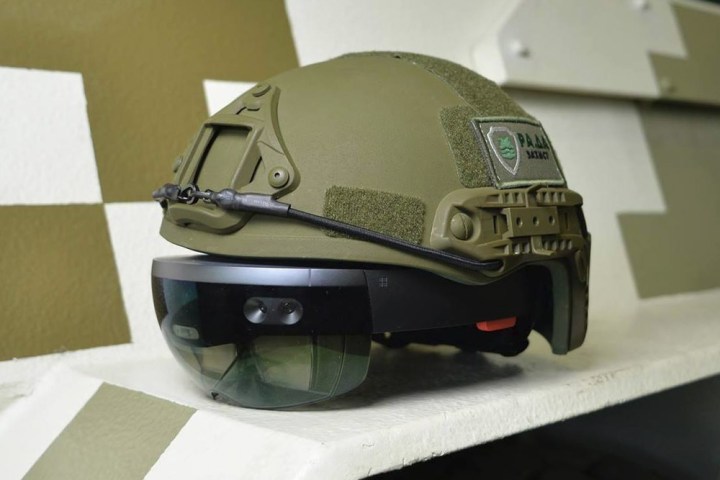
Being a real soldier isn’t like that, but it could be in the near future — and the Ukrainians are leading the way. A new prototype helmet could be used by tank commanders to give them a wider field of view without exposing them to greater risk.
Developed by a Ukrainian defense contractor, LimpidArmor, the headset — known as the Circular Review System — integrates a traditionally protective helmet with the Hololens. It can be utilized to give tank commanders a 360-degree view of the battlefield, rather than just the limited view that you are often restricted to from within a tank.
While camera feeds can of course be used to provide a moveable 2D visual, a unified 360-degree perspective is far more versatile and can be used to overlay much more information to the wearer if required.

Shown off at the Arms and Security event in Kiev, Ukraine, in early October (thanks MSPowerUser), the Hololens-equipped headset would not only be capable of a wider field of view, it could also highlight enemies and or allied troops (“friendlies”). Other features include automated target acquisition and tracking, potentially even using it to call in strikes from drones and similar attack craft.
While trials have taken place in LimpidArmor’s testing facilities, it hasn’t seen any live field testing just yet. However, it is expected to progress quite quickly through the next few phases, with plans to bring it to market as soon as possible.
LimpidArmor is said to also be working on civilian implementations of the headset for use by airline pilots, large industrial vehicle drivers, and drone pilots. Will gamers follow?
Editors' Recommendations
- Turns out Microsoft’s HoloLens 3 might not be dead after all
- Microsoft and Samsung could team up on new AR headset
- Hands-on with Microsoft Mesh: I handed someone a whale shark, and it was awesome
- Microsoft’s futuristic HoloLens 2 headset is now shipping, starting at $3,500
- British Airways will test virtual reality headsets for first-class passengers




